LCA: City of Greater Dandenong
Chairman: Neil Brown
Manager: Adrian Scott
Tel: (03) 9546 9511
Fax: (03) 9558 4453
Email: sandown@grv.org.au
Website: sandowngreyhounds.com.au
Address: View Road,Springvale, VIC 3171
Postal: PO Box 13, Springvale 3171
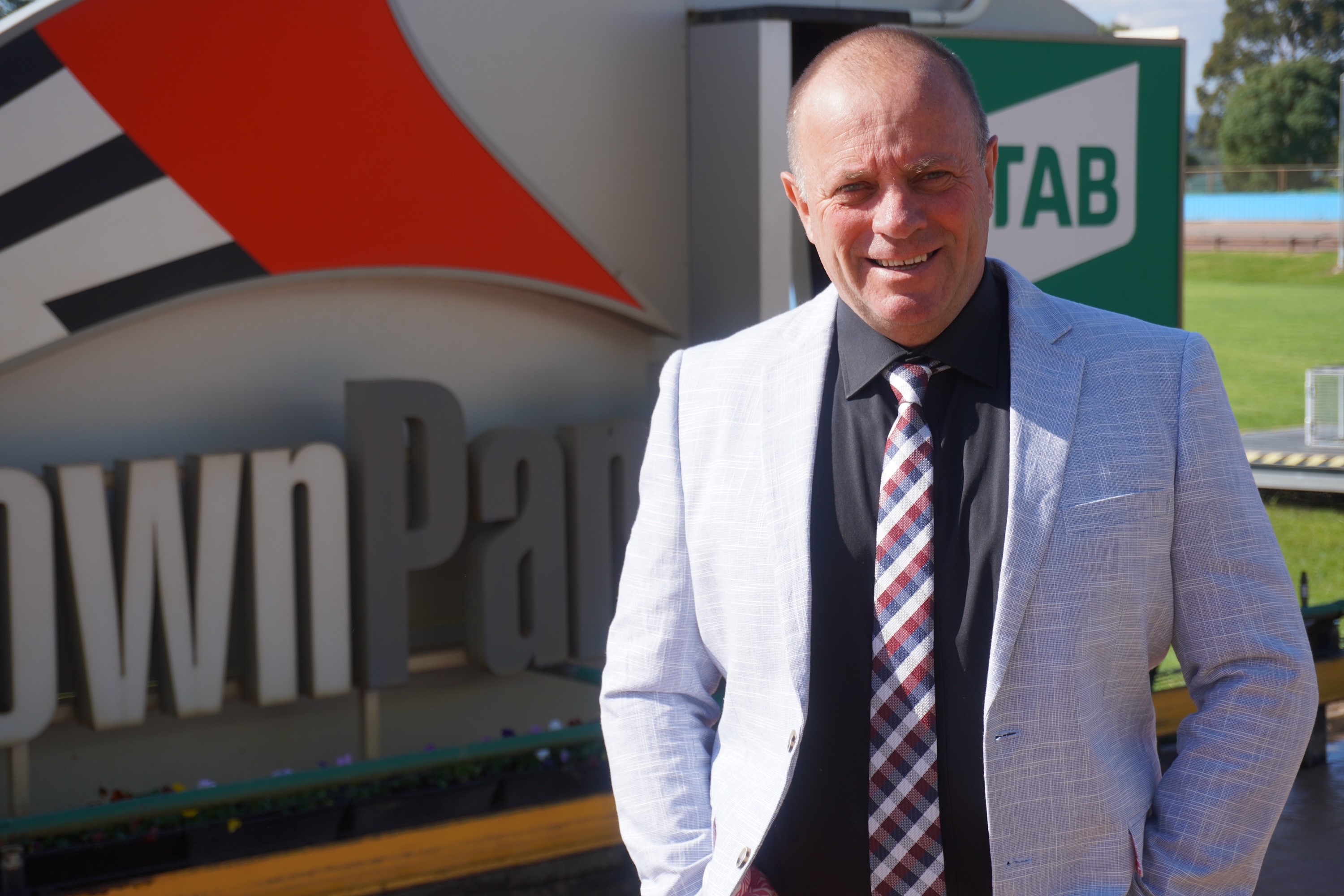
CEO Adrian Scott
Adrian was born in Mirboo North in Gippsland where he lived until late primary school years when he and parents and four sisters moved to Boronia. After the completion of his secondary schooling Adrian decided to join Victoria Police Force, commencing in the Police Academy in June 1979. He remained in the Police Force for 20 years, working both in metropolitan and country areas.
In 2000, Adrian purchased an agricultural business - dealing in pasture seed and turf seed. Which he ran in West Gippsland for about 6 years. After selling the business as a going concern, he was employed by a major Australian Seed Company as a Regional Business Manager for Tasmania and the Gippsland region.
In 2014 Adrian was appointed Manager of the Warragul Greyhound Racing Club where he worked until March 2020, when he then took over the position of CEO at Sandown Greyhound Racing Club.
Throughout his time in the greyhound industry Adrian has been passionate about the advancement of the 13 greyhound Clubs, he was instrumental in the formation of Greyhound Clubs Victoria, becoming the inaugural Chairman. He has worked exceptionally hard in the last 3 years to ensure Greyhound Clubs Victoria has a strong voice and works collaboratively with GRV to enhance the performance of the 13 clubs.
Adrian's love of greyhounds and greyhound racing dates to his teenage years where he often found himself at Sandown on a Thursday night.
Adrian also has a love of horse racing and was an owner trainer for some years travelling around country Victoria to both picnic and country race meetings.
Residing in a small country town has seen Adrian develop a very strong community spirit:
a Life Member and former President of the Nar Nar Goon Football Club as well as being a founding Board member of the recently reformed West Gippsland Football Netball competition has kept Adrian in close contact with the grass roots sport. Adrian is a passionate Richmond supporter.
Adrian has a daughter, Bridget, who also worked for Greyhound Racing Victoria in a media marketing role until she moved on to a media role with Casey Council in South East Victoria.
Adrian and his wife Christine have a new addition to the household, Shadow - a retired racing greyhound - who has made himself completely at home in the paddocks and house.
FUN FACT - Neil Brown
There have been three standouts to race at the three MGRA venues. Starting at North Melbourne, a tricky oval circuit which observers from that era state without contradiction that champion chaser Rookie Rebel was almost unbeatable. He won on many occasions including an outstanding
win in the 1957 Australian Cup. He was a great railer and North Melbourne suited his style of racing, but as the late George Schofield said of the best dog he ever saw race “Rookie had track sense like no other. He would look above the other dogs for the best passage.” Rookie Rebel 67
starts for 36 wins and 23 placings.
At Olympic Park there were many outstanding dogs one favourite was Striding Ahead, but there was none better than Temlee, he raced on 37 occasions for 25 wins. He was the undisputed ‘King of Olympic Park’. He won 13 races from 19 starts on Swan Street’s No. 2 Oval – including the
1974 National Sprint Championship, 1974 Maturity and a 29.67sec track record in 1974, a mark that stood for 10 years. Another mad railer, he was never beaten from box one. Unfortunately, Temlee’s race career came to an abrupt halt when he cracked a bone in his left hind leg at
Olympic Park. However, he became arguably the best stud dog of all time. Some of his early champions he produced included Satan’s Legend, Tempix, Tangaloa, Chief Dingaan, World Acclaim and Roy Trease.
At Meadows again we have seen superstars win many features over the past 20 years but for sheer versatility there has been none better that Fanta Bale. The daughter of David Bale and Ucme Typhoon retired with a record $1,365,175 in prize money. She won 42 of her 63 career starts, contesting 22 group finals, winning 13 including a record nine group 1’s. The Queen of the Meadows won five of those group 1 finals on her favourite track. The 2016 Hume Cup (600m), 2017 Rookie Rebel (600m), 2017 Australian Cup (525m), 2018 Zoom Top (725m) and 2018 Super
Stayers (725m). Overall, she raced at the Meadows 12 times for 10 wins and one placing.
Three immortal stars that shone over 60 years.
HISTORY OF THE SANDOWN GREYHOUND RACING CLUB - by Neil Brown
In 1934, a number of local greyhound owners formed the Springvale and District Coursing Club. The first meeting of this club was held in September on Show Day on James Young's land in Springvale Road. Despite somebody stealing some of the hares two days before, it was a decided success with 250 spectators watching 68 greyhounds running nine races over a straight track of 250 yards. The club folded when Roy Maidment organized the Sandown Greyhound Racing and Coursing Club with a committee connected with the National Coursing Association of Victoria. The Club Secretary was Jack McKenna, who had successfully organized coursing at Tatura. McKenna recalled that he and Roy Maidment decided to establish the Sandown Company in 1933 to promote both Plumpton and Speed coursing behind the pacemaker.

National Coursing Association of Victoria stalwarts, C J. Stewart (Chairman), Bob Cooper, Chris Flint, Fred Callil, Archie Pyke, Eric Herbert, John Bennett and Pat Killeen, with Mc Kenna as Secretary, set up a proprietary partnership named Sandown Park Coursing Club. While the original intention appears to have been to establish National Coursing Association of Victoria influence in the rising sport of tin hare racing, the founders established a separate legal entity thinking that governance by true coursing men would be sufficient to maintain NCAV influence. Ironically, this mistake was to dog NCAV efforts to play a role in tin hare racing until the mid-1950s.
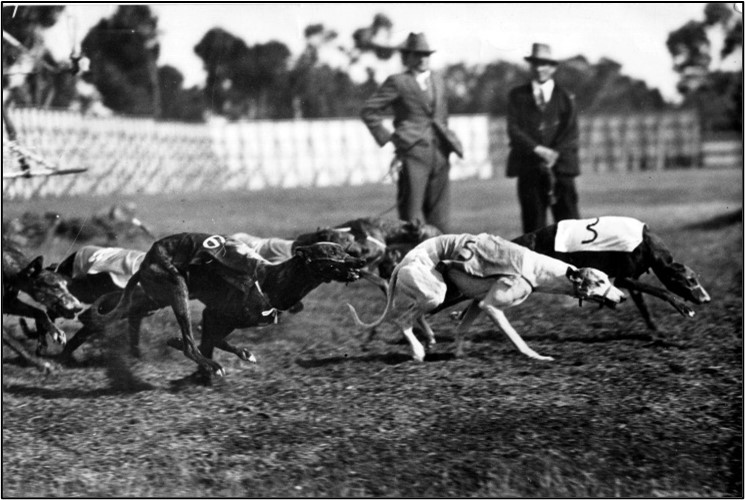
They leased the old Sandown racecourse, where metropolitan horse racing is now conducted by the Melbourne Racing Club, for £150 ($11,000) a year. A Speed coursing racetrack and a Plumpton coursing field were constructed in 1935 with Speed coursing commencing in September 1935 and Plumpton coursing starting in 1936. However, an uncontrollable germ in the ground killed so many of the hares that it became very difficult for open field coursing to continue.
The early history of track racing at Sandown was marred by a long dispute with the NCA involving times for scheduling meetings. The NCA had given Napier Park and Maribyrnong permission to race on Tuesday afternoons and steadfastly refused permission for Sandown, White City or Gracedale Park to race at night. In theory, this would have effectively given immunity from competition to the Napier Park and Maribyrnong clubs in terms of night racing, except that White City and Gracedale Park ignored the NCA ruling. Sandown however, abided by the NCA ruling, racing during the day on Tuesdays. Secretary Jack Mc Kenna argued over many years that Sandown Park should be permitted to operate under lights on any night it chose. He objected strongly to Sandown Park being excluded from the weekly night racing recommendation suggesting that Sandown and Gracedale Park alternate on a weekly basis. Sandown continued to race during the daytime until the 1950s when non-proprietary racing came in.

Daylight Speed coursing continued at the Sandown track until April 1942 when the ground was taken over by the US army; not resuming until 1944. In 1947, the Club rejected an offer to purchase the 169-acre property for £40,000 ($1.5m). By 1948, the racecourse property had been purchased by the Victorian Amateur Turf Club (Caulfield) now known as the Melbourne Racing Club. The Sandown Park Coursing Club then purchased the current 19-acre site on the other side of the railway line in Lightwood Road for £9,100 ($372, 000). Permission to race was only granted on the condition that a straight track be installed to placate coursing interests. The straight track cost £6,000 ($232,000) and was only used once.
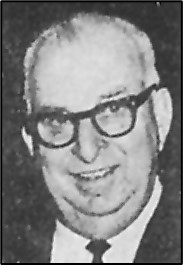
When the legislation for non-proprietary racing provided for two metropolitan greyhound track licences, the retiring Sandown Park Coursing Club partnership agreed to dispose of the freehold property in Lightwood Road to the newly formed nonproprietary body, the NCA of Victoria, for a bargain basement price of £75,000 ($2.6m) This was designed to strengthen their bid for one of the two licences to be granted in January 1956 .
The new club was financed by more than one hundred subscribers contributing £55,000 to the Debenture Issue. One licence to conduct speed coursing was issued to the National Coursing Association of Victoria and the other to the Greyhound Owners Trainers and Breeders Association (GOTBA) With conversion complete both city licences were able to commence the long awaited mechanical racing at Sandown in September 1956. The Melbourne Greyhound Racing Association (GOTBA licence) continued to race at Sandown until its own ground, at the site of the North Melbourne Football Ground was completed in October 1957. On legal advice, the NCA was now divided into two separate companies. A new company, named simply, the National Coursing Association (NCA) was formed to control track racing at Sandown while the Executive of the National Coursing Association of Victoria (NCA of Victoria) would conduct and control open field coursing. Under Chairman Jack Kelly, a Directorate of true Plumpton men set about the task of sending greyhound racing into a new era at Sandown.
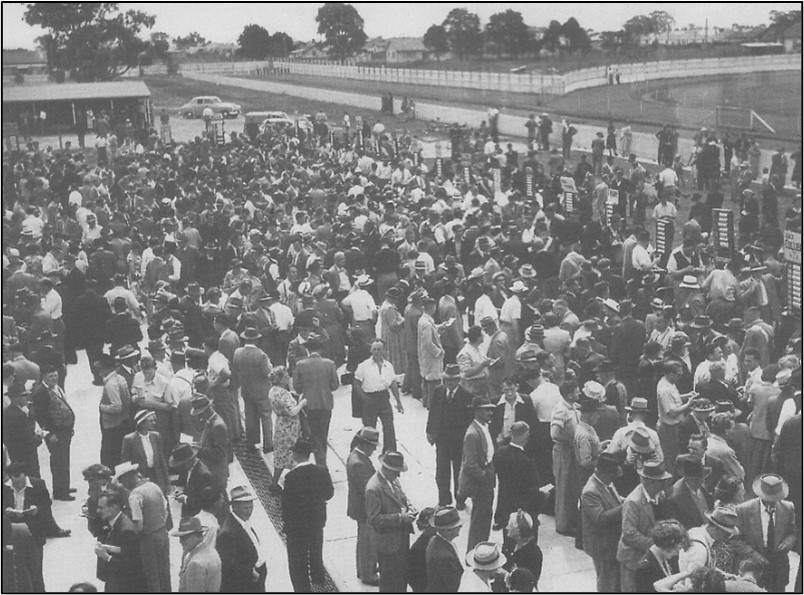
But over time, the President of the NCA of Victoria, Silvester Doyle who had moved from the original Sandown Directorate to its administration became concerned that the changing structure of the Directorship was weakening the influence of the NCA of Victoria at Sandown. Matters came to a head when Jack McKenna (Sandown Secretary from 1956 – 1971, apparently at the instruction of Government Undersecretary John V. Dillon and Committee newcomer Henry Harrison submitted the annual renewal of the Sandown racing license in the name of National Coursing Association omitting the crucial "of Victoria". This effectively transferred the racing license to Sandown and freed the Sandown Club from the influence of the National Coursing Association of Victoria. This led to an acrimonious split and much bitterness between the two bodies. The divide between supporters of the new "tin hare" and the traditional and time-honored Plumpton deepened. It certainly didn't improve relations between Doyle and Harrison. Doyle would have to watch the increasing power of Harrison and Sandown during the slow but inevitable decline of his beloved NCA. Eventually, it was agreed that 5% of the Sandown gate takings would go to the NCA of Victoria as a form of compensation. Heavy usage of the original grass surface contributed to maintenance difficulties and resulted in the decision to change over to a sand track in 1964.
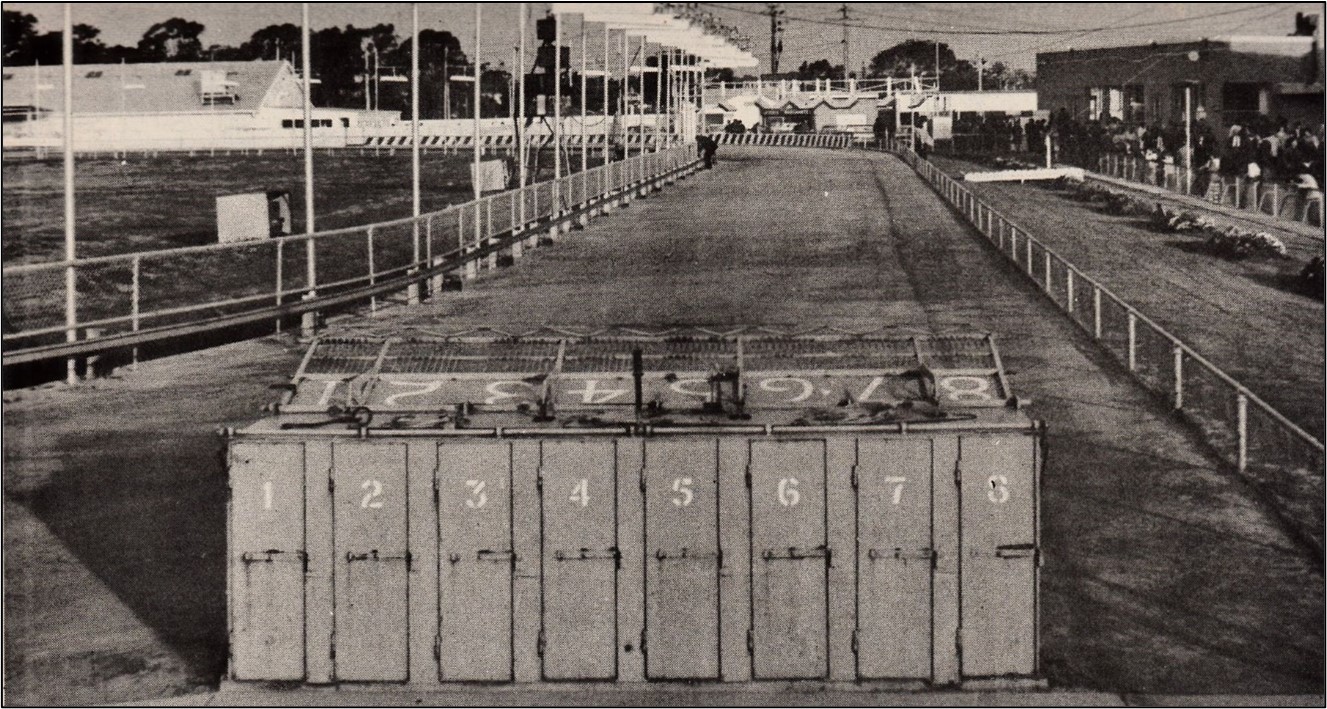
The 1960s saw the ascendancy of Henry Harrison in Victorian greyhound racing. Henry Harrison was a giant in the greyhound industry. He inspired great devotion and loyalty in the many who worked for him during his 23 years as the Chairman of the Sandown Greyhound Racing Club. He ruled the club as a personal fiefdom and his rule was, “My way or the highway." There were, however, others who hated him with a passion. Much of it was a result of his early actions as a committeeman at Sandown where he, Jack McKenna and John Dillon , in an act of Machiavellian cunning and beautiful simplicity, arranged transfer of the Sandown license from the NCA of Victoria to the Sandown Club. It was typical of the man.
He achieved the independence of the Sandown club from the traditional and conservative coursing interests in the NCA and throughout his time as Chairman, continued to put the interests of the Sandown club before anything else. He believed that "What's good for Sandown is good for the industry'" and he was prepared to wear the resulting and unending animosity of long time NCA stalwarts such as Silvester Doyle and Noel Banks.
Henry Harrison was a self-made man. He made a significant fortune through his company that sold Harrison's Toolboxes to tradesmen in the boom years after the WWII. He was also a keen thoroughbred owner and aspired to a position on the board of the VRC. However, self-made men were not necessarily made welcome in those rarefied social circles. So, Harrison turned his energies and considerable talents to the greyhound industry and more specifically, the Sandown Greyhound Racing Club.
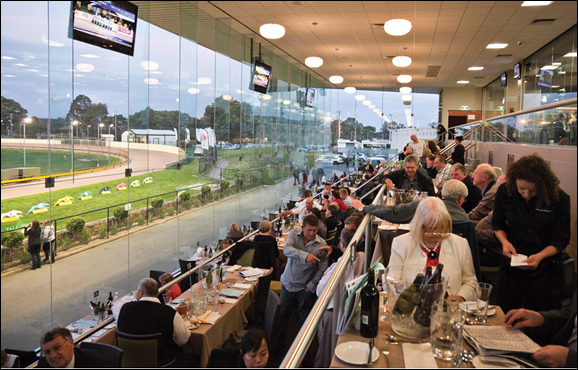
There are probably two events that have shaped the history of modern greyhound racing. The first is the abolition of proprietary racing and the establishment of the non-proprietary clubs which was a result of the work of greyhound stalwarts such as Flint, Maidment, Doyle and Henneberry. The second is the establishment of off - course TAB betting on greyhound racing for which Harrison can take almost all of the credit.In addition to his significant contribution to the industry, he provided the greyhound industry and Sandown in particular, with a dazzling media profile. He brought celebrity glamour to Sandown with a young Greg Norman drawing the raffle for a Mercedes - Benz during a Cup meeting. Film stars Robert Stack and Elke Sommer attended racing meetings that received front-page coverage in the local press.
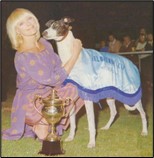
Many were critical of the expense of these activities. Stack was reputed to have cost $20,000 ($110,000) to bring out from America. Harrison's reply was that these activities gave greyhound racing a profile that would bring people flocking through the gates. And they did flock through the gates, with 10,000 people paying $5 a head to attend the Melbourne Cup and a normal nights' attendance on a Thursday often topping 5000. There were rivers of cash, more than enough to finance these high-profile activities.
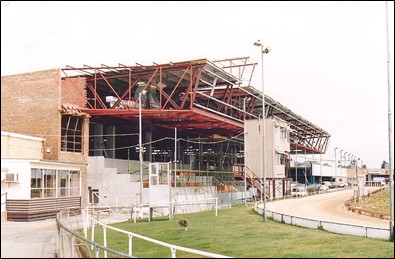
The Henry Harrison grandstand at Sandown, which opened in 1986, is a memorial to this giant of the industry. Built during Harrison's time as Chairman and reduced from an original design to hold 15,000 people, it is a reminder of the vision of the man and of the past glories of the greyhound industry. He was inducted into the GRV Hall of Fame in 2009. Before Harrison's time. it was tough going. Money was often so short that Mc Kenna would often throw bills in the air and say, "Catch three" and those would be the ones that were paid. Stake money which in the 1940s was $400 ($22,800) a meeting, had become $4,000 ($96,000) by the late 1960s. But by the late 1960s, attendances were up 29 percent on the previous twelve months, on-course tote turnover had increased by 35 percent and “bookmakers” turnover had grown by 20 percent. TAB turnover at Sandown alone had increased by $1.8m in a comparable period of only ten months, stakes increased by 46 percent and many thousands of dollars were being spent on improvements and amenities.

In private trials, a greyhound would be trailed without anyone other than the owner, the lure driver and the starter being present. Private trials were designed to keep the greyhound's form a secret. However, the professional gamblers were often able to work out the times. Often the trials would be watched from houses across the road. These gamblers would arrange for the owners of the houses to let them into the roof and then lift the roof tiles and use their binoculars and time the greyhounds, or perhaps someone would go in and talk to Jack Malone, the ground foreman, about the weather and accidentally watch the trials through the window. There was big money involved with some book makers holding up to $100,000 ($675,000) per night. Weekly bookmaker holdings of $2, 5m ($16m) were closer to the true amount held as the "officially" returned figures which were traditionally "trimmed" by the bookies to avoid paying turnover tax.
Harrison ruled with an iron fist and his only daughter Loretta often took an active interest in running the club. It was “His way or no way” and you were in or you were out with Henry. His Directorate and staff rigidly toed the line and his by-line of "ya back em or ya sack em" prevailed without question. This did not endear him too many of the rank and file owners and trainers and there was seemingly incessant whingeing about his style and vision for greyhound racing. Sandown became known as Henry's Club rather than an asset of a wider greyhound industry. Harrison was elected democratically by the members and membership of the Club was always open but many remember membership application forms being notoriously difficult to obtain, meaning membership was controlled much as Capron was doing at Geelong.
Through the 1970s and 1980s, Ron Snell was the club accountant and Marg Scarlett was the public face of Sandown. Henry strongly backed both of his senior managers, using an always immaculately presented Scarlett to promote the club. Scarlett came to personify the glitz and glamour and the strong celebrity status associated with major Sandown events. While very successful from an image perspective, these promotions were not universally we’ll received and in particular the rank and file began to circulate scurrilous rumors about the cost of such promotions. Harrison was regularly at odds with participants who wanted club funds to be put into prize money. In 1981, to celebrate their twenty – fifth anniversary, Sandown purchased a silver Mercedes Benz as a lucky patron prize and as a result. The 'Sandown way' again came under fire as being aloof and removed from the true greyhound world.
With exponential growth of patron numbers and the Sandown car park always full, the City of Springvale was forced to begin policing parking restrictions in streets surrounding the course. In addition to race nights, trials occurred on Tuesday nights between the hours of 6pm and midnight but many sessions extended into the early hours of the next day. Trial fees, attendance money, bookmaker fees, catering and beverage turnovers all provided Sandown with a substantial cash flow that boosted the substantial on course turnovers and profits.

However, viewing comforts for patrons were poor. Sections of the grandstand, which had been rolled across from the Sandown racecourse on the other side of the railway line in the late 1950s were primitive and the betting ring was no more than a covered shed, open to the north to give punters direct access to the track. The club bar (now the Tabaret) was the second largest, “night bar" in Melbourne often requiring over 20 eighteen gallon drums each Thursday night to quench the thirst of beer drinkers. At the other end of the track, McKenna Hall was constructed in 1970 to provide (non - drinking) patrons with a reasonable food and beverage environment. A western section of McKenna Hall was set aside for the Sandown Committee and special guests. Ann McKenna, Jack's widow was the nightly hostess of the room and Bill Dempsey the ever-busy barman. Long standing club employee and Life member Lorraine Dagg remembers poker games at ($1,000) ($5,500) a card being played in the Boardroom.
In 1992 and in much tighter times, McKenna Hall was converted to a track maintenance facility and a veterinary clinic facility then highlighted by the presence of Dr Jim Gannon.
A badly needed grandstand was delayed primarily because the Government's Development Board rules only allowed for the funding of building on Crown land. For most clubs, this was not an issue. However, Sandown was a free hold property purchased in 1957. In what later proved to be a masterpiece of financial and political manoeuvring, Henry Harrison repeatedly refused to cede the Sandown freehold back to the Government. Tradition dictated that Development Board funds from TAB turnovers were allocated equally between the Sandown and the MGRA. While the MGRA, located on Crown land at Olympic Park, was able to spend the money on capital works, Sandown was not. Harrison did a deal with Bill Conroy, the Chairman of the MGRA, to allow for all of the
metropolitan Development funds to go to the MGRA to build their new grandstand in 1979. The stand would also encircle a warm-up track to impress International Olympic Committee delegates as part of Sports Minister Brian Dixon’s (unsuccessful) 1988 Olympic Games bid for Melbourne. This Harrison/Conroy deal effectively used funds from the racing industry to support the Olympic bid. Once the deal was signed. Harrison called in some political favours. With some rearrangement of the Sandown constitution.
Harrison’s desire for Sandown to be promoted as the "best of the best" continued but by 1988, the club had overspent their grandstand budget by about $1m, arguably as a result of delays caused by the Builders Labours Federation (BLF). Ultimately, this led to a number of new factors conspiring against the club's future.
Chief amongst these were TAB off-course betting fuelled by direct SKY Channel television broadcasts into pubs and clubs which continued to cut on-course attendance figures. In addition, drink-driving laws and the vigilance of the local police had deterred the drinking punter. Furthermore, the huge growth in the off-course TAB had eroded the number of larger punters betting with bookmakers. The buildup of these factors immediately before the 1988 stock market crash, plunged Sandown into deep financial trouble. With bridging finance attracting 22% in interest rates, the SGRC fell into financial freefall with debts of over $2m ($3.7m).
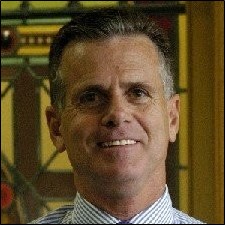
By 1987, Harrison, only the third Chairman of Directors in the club's history, was 72 and under Corporations Law was required to attain 75% of the membership vote to be re-elected as a Board member. This gave those with long memories the chance to cut down a tall poppy and cut him down they did denying him his 75% vote. In a strange irony, Harrison's son-in-law Geoff Dawson, a Club Director since 1979, became the Club's fourth Chairman in 1987. Geoff originally worked as an apprentice butcher after he left school. But he also worked part-time for a bookmaker behind a funeral parlour opposite the Town Hall in Bridge Rd in Richmond. On Harrison's advice, he chose to finish his apprenticeship with the butcher rather than work for the bookie before he married Loretta Harrison in 1965.
Dawson did not find things easy in his new role. In a torrid initiation, he found the club's financial crisis made daily newspaper headlines. A new broom swept into Sandown. When "rookie" CEO John Stephens arrived in November 1988, the Club was in chaos and the GRCB had appointed an administrator to take control of the Club. In a conciliation process facilitated by local MP and later GRV President, Jan Wilson, Dawson's "new broom" Directorate argued for time. It was agreed that GRCB Assistant Secretary Hec Caruana would join Stephens in the early reconstruction of the club's finance and management structures. Within a year, a Development Board loan was converted to a grant and a further $700,000 in previously unclaimed grandstand expenses allowed the club to return a profit. From then on the Dawson / Stephens partnership proved fruitful and Dawson's contribution to Sandown may be judged by his continuous popular Chairmanship since 1987 retiring in December 2017. Quite an incredible record.
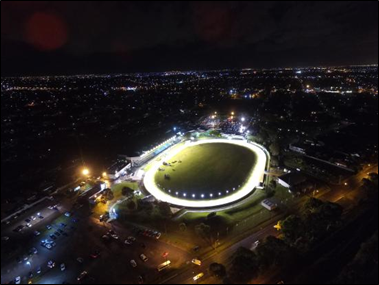

In 1997, Dawson, Stephens and NCA CEO Gavin Fitzpatrick travelled to the UK and USA to organise the internationalisation of the Topgun. This led to representation from England, Ireland and the USA in the race and up to 150 international guests attending the race. By the end of 2000, Sandown was financially strong and Stephens departed taking up the position of CEO at GRV Stephens, replacement was Jeff Davies, a former 1980s greyhound bookmaker, and now a Sports Management Consultant. Davies worked hard to progress the racing program at Sandown and events such as the Lizrene Classic and Sapphire Crown developed in his time. He departed to take up an international wagering management position.
Matt Corby was appointed in early 2005 having held a marketing role with the club for the two years previous. It had been the shared view of Davies and Corby that, despite the difficulties that racing clubs were experiencing in the modern era in relation to attracting on - course patronage, there was still a viable opportunity for promoting the race night offer to social and dining patrons. Corby continued to develop a more aggressive marketing philosophy for the club in addition to streamlining many of the processes within the business. He also oversaw refurbishments of both the interior of the Grandstand and the Tabaret. In 2006, long serving Director Geoff Dawson was awarded the Ken Carr medal for his services to the industry.
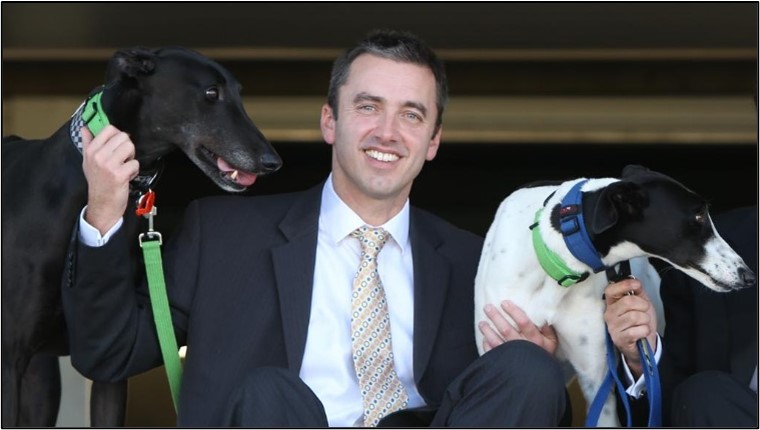
In 2011 Matt Corby left the club to become the CEO of Greyhound Racing South Australia. Corby after progressing to CEO had performed an outstanding job in progressing the club in status and standing. He continued to enhance the venue and was highly regarded by the not only the Victorian industry but Australia wide. He continues to progress Greyhound Racing in South Australia where he excelled in the role of CEO. His replacement was flamboyant former AFL Administrator Greg Miller a lifelong participant of the sport Miller brought a flare and entrepreneurial skill, the like that had never been witnessed before. He quickly made an impact not only locally but nationally and internationally.
The club is also involved in a wide range of community and charity activities. At Bayley House there is full subsidization of an annual night at the greyhounds for approximately 40 clients from Bayley House, a centre for intellectually disabled adults. Wallara’s Living Choices program is based within the Sandown grandstand where a group of six young intellectually disabled adults use Sandown Park as their operational base for coursework, education and mentoring. Sandown employs two of the young adults in a part-time capacity to develop their work experience for future employment opportunities. The club is also involved in a wide range of community and charity activities. Their four-year-old daughter was killed in the crash and the mother Kerrie was seriously injured requiring long-term rehabilitation. The event raised $30,000 towards assisting the family in their time of crisis. Sandown has been a major sponsor of football in the South East as a major sponsor of the Southern Football League SFL since 2005. The Club actively participates in the Noble Park Business Club and frequently contributes to local projects associated with the Business Club.
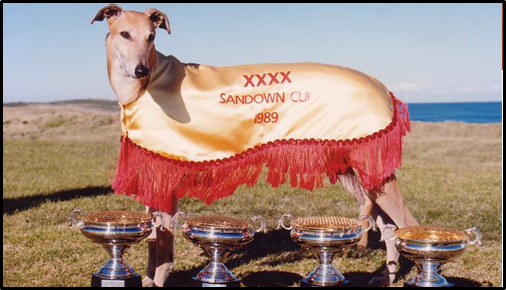

Sandown also in 2016 set up a very popular Community Fund. Applications are made on the club website and they come into the office, every three months or so the committee would meet and consider all applications. The committee consisted of the Chairman as club representative, John Mann GE representative, Brian Woodman community representative and Greg Miller Club CEO. They would decide what they thought was the right amount for a grant. The grants went to all number of organisations in the local area. Schools, sports club, scouts, community service groups there was no exceptions. The Club granted about $100,000 per year. It worked very well; Greg Miller came up with the idea to give back to the local community with funds mainly gained from the Pokies’. It gave the club high profile in terms of the City council and a lot of positive publicity throughout the municipality.
In December 2017 the club’s long serving Chairman Geoff Dawson retired after being at the helm since 1987 an extraordinary length of time which will remain the incredible feat that is was for ever. Geoff’s loyalty to the club, enthusiasm and love of greyhound racing will be hard to equal. He is extremely popular locally, nationally and internationally. He remains a synonymous figure whenever Sandown is mentioned, and the club was delighted to make him their first ever Patron. Thursday nights would not be the same without a smile and a handshake from the former Chairman.
In 2018, long serving (2001) Director and current Chairman Neil Brown was awarded the Ken Carr Medal for his services to the industry and 2019 another long serving (1989) recently retired Director David Gleeson also received the Ken Carr Medal for his over 60 years of service to the industry.
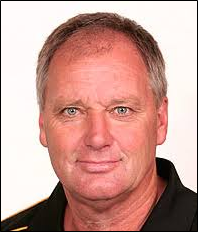
On December 31st, 2019 after nine plus years Greg Miller the club’s CEO retired from his position. It was a role he had fore filled with outstanding passion, ability, long term thinking and an undying focus on the improvement of the industry. The innovation and flare he introduced to Greyhound Racing during his time at the helm was continually acknowledged on a yearly basic. In a rare honour Greg was bestowed club Life Membership. Greg has not been lost to the industry becoming Deputy Chairman of the GRV Board another honour that deserves high praise and acknowledges his standing within Greyhound Racing Australia wide.
The club has tree key initiatives they have been working on for some time they were a Rearing Farm at Toongabbie, Syndications and the Railways Carparks. The Carparks a most overdue project has progressed without incident and should be completed in early 2021. It is a most satisfactory outcome for all involved. The Club, VicRail and both state and local governments.
The club have completed the fit-out of the magnificent property at Toongabbie and are now in the final planning stage of what the state-of-the-art rearing farm will eventually become. Syndications proved particularly challenging in many aspects and remained that way throughout the entire time they have existed. The club had a reasonably successful 2019 National Draft in December. However, it could have better, and they now continue where no other organisation has gone with their competent team led by George Farrugia working extremely hard for its success.
The club remains committed to the following principles:
• Ensuring each any every patron who attends our venue leaves with an enhanced opinion of the sport to assist us in creating advocates for our sport
• Highlighting the full life cycle and nature of the greyhound
• Working with GRV to be a re homing Club by utilising the full spectrum of our community involvement, data base and land space
• Transforming our venue into a Centre Of Excellence for each step in the greyhound preparation and re homing
• Employing both an experienced successful trainer and qualified veterinary surgeon to assist the industry in best practices education
• Investing in property outside our venue for best practices in rearing and breaking in
• To be recognised as an outstanding community club in the City of Greater Dandenong (and beyond) Being a key driver in both a united Victorian and National Clubs association.
Club Presidents
J.F. Kelly 1956 – 1959. E.C. Herbert 1959 – 1964, H Harrison 1964 – 1987, G T Dawson, 1987 – 2017, N J Brown 2017 – Present.







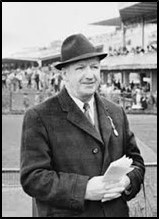





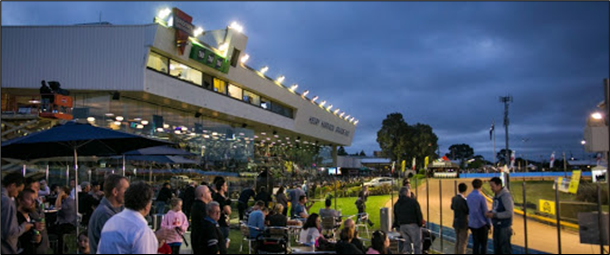
 By 1987, Harrison, only the third Chairman of Directors in the club's history, was 72 and under Corporations Law was required to attain 75% of the membership vote to be re-elected as a Board member. This gave those with long memories the chance to cut down a tall poppy and cut him down they did denying him his 75% vote. In a strange irony, Harrison's son-in-law Geoff Dawson, a Club Director since 1979, became the Club's fourth Chairman in 1987. Geoff originally worked as an apprentice butcher after he left school. But he also worked part-time for a bookmaker behind a funeral parlour opposite the Town Hall in Bridge Rd in Richmond. On Harrison's advice, he chose to finish his apprenticeship with the butcher rather than work for the bookie before he married Loretta Harrison in 1965.
By 1987, Harrison, only the third Chairman of Directors in the club's history, was 72 and under Corporations Law was required to attain 75% of the membership vote to be re-elected as a Board member. This gave those with long memories the chance to cut down a tall poppy and cut him down they did denying him his 75% vote. In a strange irony, Harrison's son-in-law Geoff Dawson, a Club Director since 1979, became the Club's fourth Chairman in 1987. Geoff originally worked as an apprentice butcher after he left school. But he also worked part-time for a bookmaker behind a funeral parlour opposite the Town Hall in Bridge Rd in Richmond. On Harrison's advice, he chose to finish his apprenticeship with the butcher rather than work for the bookie before he married Loretta Harrison in 1965.

 In 2011 Matt Corby left the club to become the CEO of Greyhound Racing South Australia. Corby after progressing to CEO had performed an outstanding job in progressing the club in status and standing. He continued to enhance the venue and was highly regarded by the not only the Victorian industry but Australia wide. He continues to progress Greyhound Racing in South Australia where he excelled in the role of CEO. His replacement was flamboyant former AFL Administrator Greg Miller a lifelong participant of the sport Miller brought a flare and entrepreneurial skill, the like that had never been witnessed before. He quickly made an impact not only locally but nationally and internationally.
In 2011 Matt Corby left the club to become the CEO of Greyhound Racing South Australia. Corby after progressing to CEO had performed an outstanding job in progressing the club in status and standing. He continued to enhance the venue and was highly regarded by the not only the Victorian industry but Australia wide. He continues to progress Greyhound Racing in South Australia where he excelled in the role of CEO. His replacement was flamboyant former AFL Administrator Greg Miller a lifelong participant of the sport Miller brought a flare and entrepreneurial skill, the like that had never been witnessed before. He quickly made an impact not only locally but nationally and internationally.

 On December 31st, 2019 after nine plus years Greg Miller the club’s CEO retired from his position. It was a role he had fore filled with outstanding passion, ability, long term thinking and an undying focus on the improvement of the industry. The innovation and flare he introduced to Greyhound Racing during his time at the helm was continually acknowledged on a yearly basic. In a rare honour Greg was bestowed club Life Membership. Greg has not been lost to the industry becoming Deputy Chairman of the GRV Board another honour that deserves high praise and acknowledges his standing within Greyhound Racing Australia wide.
On December 31st, 2019 after nine plus years Greg Miller the club’s CEO retired from his position. It was a role he had fore filled with outstanding passion, ability, long term thinking and an undying focus on the improvement of the industry. The innovation and flare he introduced to Greyhound Racing during his time at the helm was continually acknowledged on a yearly basic. In a rare honour Greg was bestowed club Life Membership. Greg has not been lost to the industry becoming Deputy Chairman of the GRV Board another honour that deserves high praise and acknowledges his standing within Greyhound Racing Australia wide.

